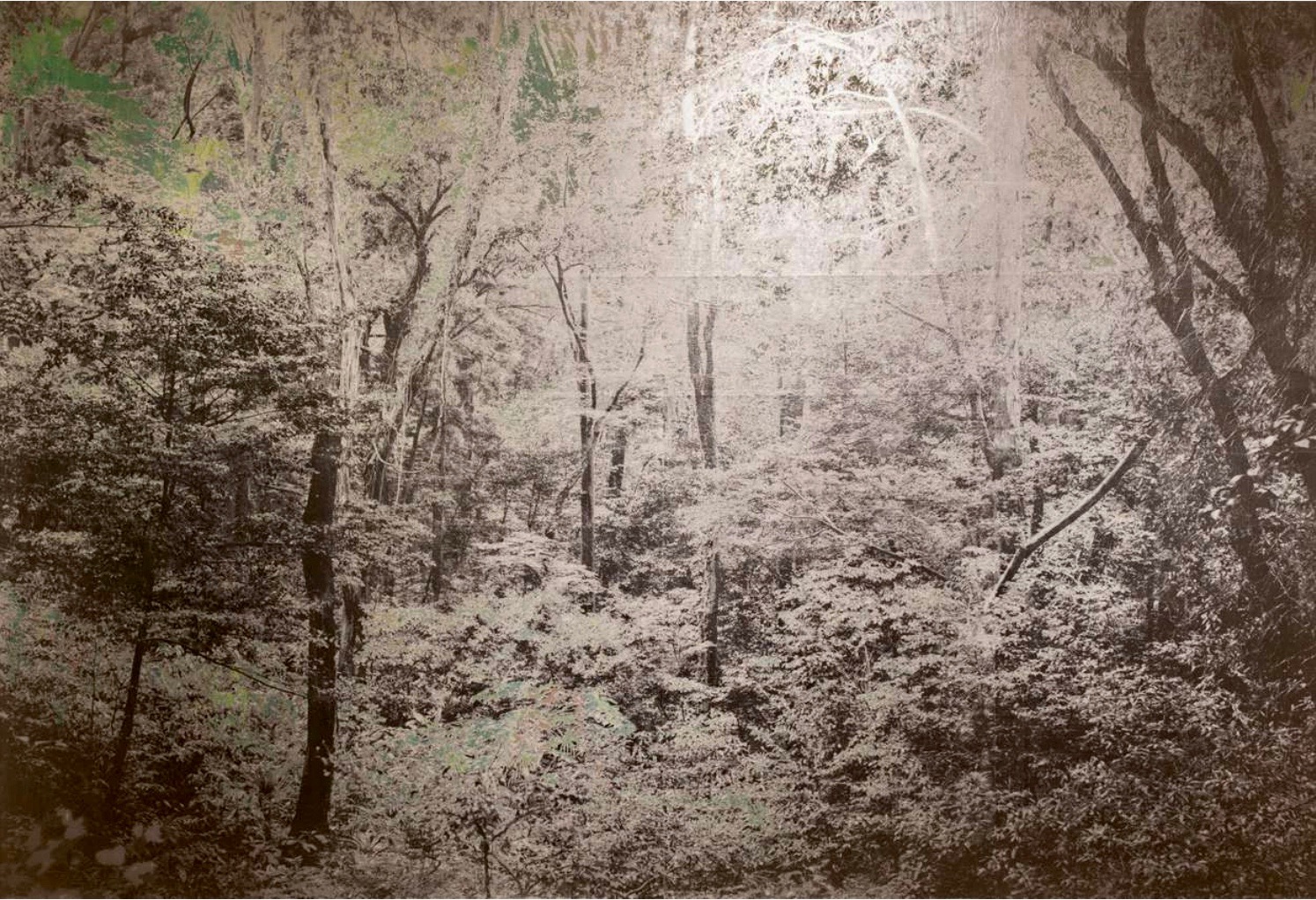Masayoshi Nojo

If you have ever driven past a forest at night, when the full moon is out and thought about pulling over in your car to walk through the trees in the moonlight, something probably stopped you, in most cases a bit of fear. Artist Masayoshi Nojo has re-created this foreboding of darkness with the experience, of immersing yourself in this mystery of being lost in the silver and shadiness of tall shadowy trees. A forest where things are hidden is replaced with the true beauty of this natural phenomenon. The forms of forest foliage picking up the rays of moonbeams, in an array of iridescent reflection as it glimmers and glows, immersing you in shadowy forms that engulf you, much like our childhood fiction. You can almost feel the presence of souls and spirits, as your imagination journeys with the cavorting light in the night of nature. Especially when standing in front of his six meter forest. The body of work ranges in scale and size as he focuses on other forms of nature as light leaps on top of leaves, or the moonlight in the opening of the woods with the softness of water at night. Hints of yellow gold and shades of green resonate through in a delicate dance. The body of work displayed at the JD Malat gallery in Mayfair, London 2020. The space itself lending to the experience of Masayoshi’s giant artworks.



The method of his creations is what gives them this immersive and luminous quality. Inspired by his walks in the deep forests, surrounding the Meiji shrine, located in Shibuya, Tokyo. Masayoshi explains that 70% of Japan’s landscape is mountains, mostly covered with woodland. His artworks identify with Japanese culture, embracing the natural phenomena of nature, a very popular motive in Japanese art, he explains. Paintings of flowers and blossoms and the use of gold and silver leaf on artworks going as far back to the Azuchi–Momoyama period from 1573 to 1615. However most notably Ogata Korin from the 17 century Edo period, famous for his blooms on gold leaf and marbled silver rivers. The changing colours of the metal through oxidisation over time, that has become so symbolic in Japanese art. It is this very combination of the influence in the elements in Korins work reflecting the passing of time, combined with the western contemporary approach in Masyoshi’s work that is so extraordinary. It is reflected in this multifaceted layering. He first creates a marbled base made of acrylic, then he photographs the natural environment of the woodlands, emphasising the passage of time with the use of metal leafs. Images can vary from the time of day, the weather changing the lighting and ambience, therefore the art is influenced by the effects of time, Masayoshi explains.



Masayoshi works on his images in photoshop, manipulating the photographs, which are then transferred via silk screen printing onto the acrylic marbled base; inspired by the traditional techniques used to create patterns on Kimonos. He does the screen printing himself, creating a multi faceted depth to the works and then additionally applies silver and aluminium leaf. Refining the intricacy of light and shadow. He describes at as a ‘mirage’ depending on how the light effects the artworks, a perception of time, the relationship of memory using light to transform the reality of the artwork. He references “wabi-sabi” a world centred on the acceptance of transience and imperfection, the aesthetic in Japanese culture, that beauty is in all things, even those that are imperfect. This appreciation of change is reflected in his materials and his process of creating the art.



Remarkably, Masayoshi reveals that he made the screen printer himself, the actual machine, he explains it was cost effective to make it himself, which he keeps in his one of his two studios in Tokyo. He was born in Kanagawa, in 1989, to an artistic family. I ask him if always knew he would be an artist, and he reveals, his early years as a boy he was always painting, the only member of the family who isn’t a professional musician. His mother a piano and music teacher, along with his sister a professional violinist and his brother plays both the violin and guitar. However undecided on his career choice, Masayoshi went to an academic school and he didn’t paint during this period. His mother did encourage him to paint; after graduating from high school, he decided on the Kyoto University of Art and Design to study Fine Art for four years, along with a masters for two years in art and design. During his masters in 2014, he made his first visit to London, inspired by the museums, galleries and art fairs the experience left an impression, “There were so many differences from Japan” he explains and decided that he wanted to exhibit in this city famous for its diversity. Additionally Masayoshi is Influenced by artists such as Anselm Kiefer, Hiroshi Sugimoto, Michael Borremans, Olafur Eliasson,On Kawar and Rudolf Stingel.


Masayoshi’s work has appeared in various art galleries in Tokyo. However in the spring of 2018, is when visionary and internationally recognised Art Dealer Jean-David Malat discovered Masayoshi’s work at the Volta NY in New York, US. Jean-David exhibits contemporary artists in his gallery, advocating the emerging and modern talents, to some of the most prominent collectors. That vision Masayoshi had as a student, has become a reality, now exhibiting at the JD Malat Gallery, in Mayfair. The series of work, his ‘Mirage’ titled, Under the Moonlight his first solo show.
The exhibition runs until the 15 February 2020, at the JD Malat Gallery just next door to Claridge’s.
Interview: Antoinette Haselhorst
